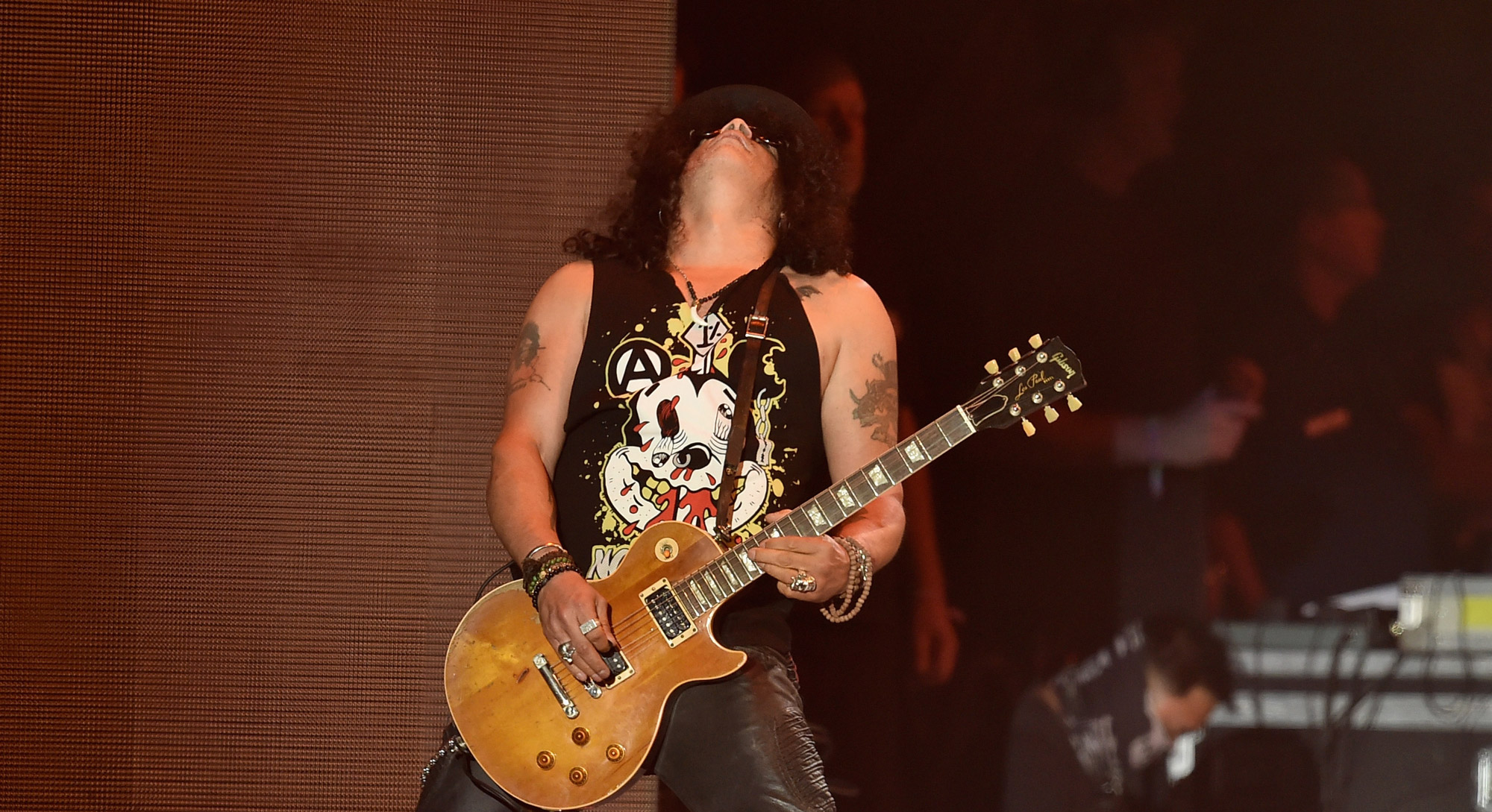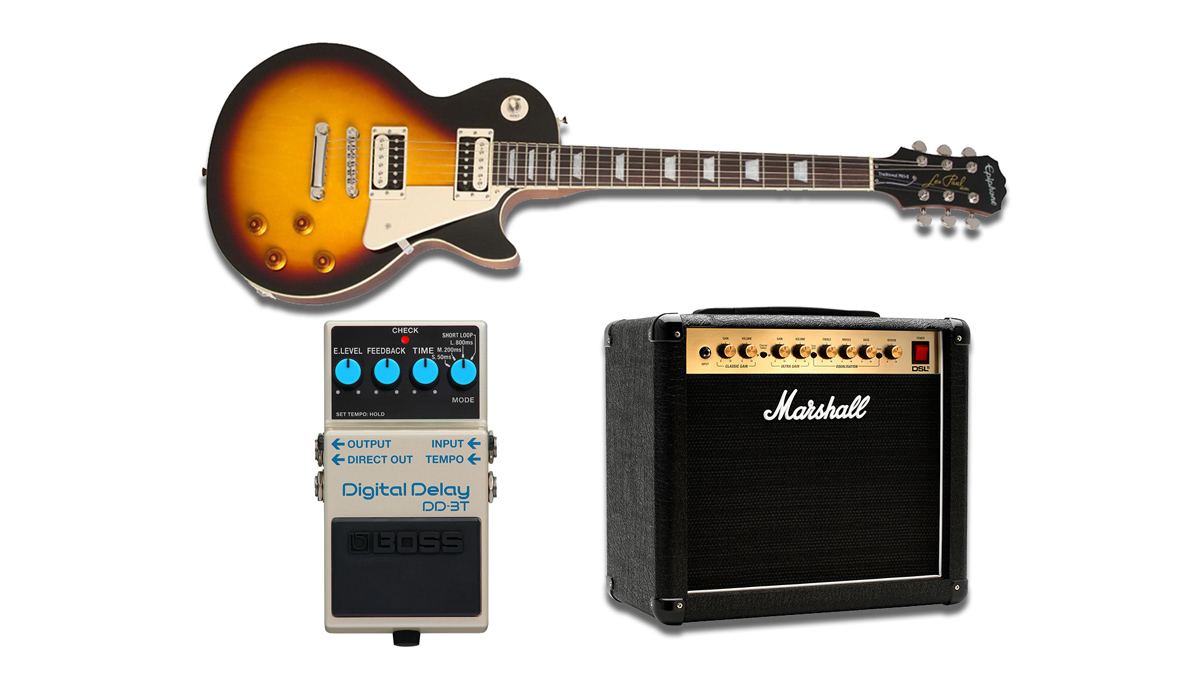The secrets behind Slash's guitar tone on Guns N' Roses' Welcome to the Jungle
How the legendary hard-rocker achieved his sound on one of the band's most iconic hits

With its gutter-punk attitude and the raunchiest dual-guitar attack since Aerosmith’s Rocks, Welcome to the Jungle was the perfect choice for the first U.S. single release by Guns N’ Roses in 1987.
The song made a potent first impression, mostly thanks to Slash’s dramatic delay-driven intro, massive power chords and blues-infused solos, which made a perfect foil for Axl Rose’s wailing vocals.
Slash’s tone throughout the song comes courtesy of the timeless Les Paul/Marshall combination. While metal guitar tones of the time were all about scooping out the midrange, Slash’s tone is predominantly mids.
A Frank Levi–modified Marshall 1959 Super Lead head rented from L.A.’s Studio Instrument Rentals provided boosted gain crunch and additional midrange honk. For the clean section in the middle, Slash simply rolled down the guitar’s volume control (low/medium-output pickups and a non-master volume amp are key for this approach).
For most of Jungle Slash’s tone is bone dry, but on the intro and for a few special stab and slide effects, producer Mike Clink employed a favorite secret weapon - the Roland SRV-2000 Digital Reverb.
While the SRV offers outstanding reverb effects for guitar, it also can convert into a dedicated digital delay unit by holding down a “secret” control button configuration when powering on, which Clink used for the intro.
The SRV unit plays a crucial role in Slash’s sound throughout Appetite, including the intro to Sweet Child O’ Mine.
Get The Pick Newsletter
All the latest guitar news, interviews, lessons, reviews, deals and more, direct to your inbox!
Get the sound, cheap!

- Epiphone Les Paul Traditional PRO-II electric guitar
- Marshall DSL5C combo amp
- Boss DD-3 Digital Delay
TONE TIP: Place the delay in the Marshall’s effects loop and set the controls for a dotted-eighth note delay, about five-to-six repeats and a 50/50 wet/dry mix for a combination of rhythmic delays and reverb-like decay.
Slash's original gear
GUITAR: Mid-'80s Kris Derrig ’59 Les Paul Standard replica with Seymour Duncan Alnico II Pro humbucker (bridge pickup)
AMP: 1977 100-watt Marshall Super Lead model 1959 with “Superkill” modification by Frank Levi and Glenn Buckley (Presence: 8, Bass: 5, Middle: 8.5, Treble: 7, Volume 1: 10; guitar plugged into Channel 1 top input)
CABINET: Marshall 1960 4x12 with Celestion Vintage 30 speakers
EFFECTS: Roland SRV-2000 Digital Reverb (set to “secret” delay mode: hold down Reverb/Non Linear, Write and Room Simulate buttons while powering on; Delay Time: 318ms, Feedback: 30, Output: 50)—used on intro only; for “stabs” and slide part increase delay time to 425ms and pair with an additional SRV-2000 in plate A reverb setting.
STRINGS/TUNING: .010–.046 Ernie Ball Slinky/Eb Standard (i.e. tuned down half step to Eb Ab Db Gb Bb Eb)
PICK: Dunlop Tortex 2.0mm
Chris is the co-author of Eruption - Conversations with Eddie Van Halen. He is a 40-year music industry veteran who started at Boardwalk Entertainment (Joan Jett, Night Ranger) and Roland US before becoming a guitar journalist in 1991. He has interviewed more than 600 artists, written more than 1,400 product reviews and contributed to Jeff Beck’s Beck 01: Hot Rods and Rock & Roll and Eric Clapton’s Six String Stories.












